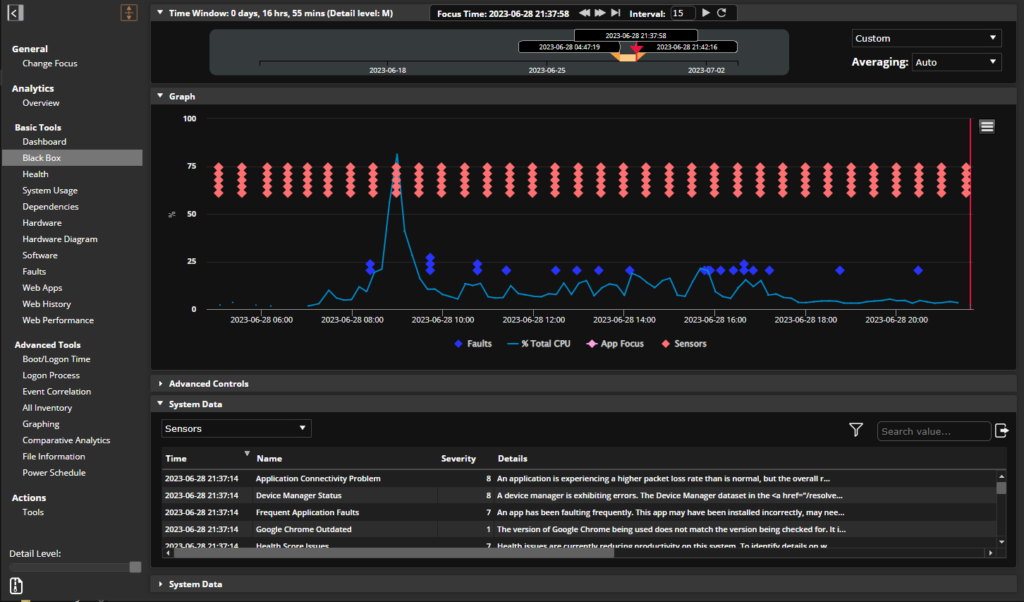
Develop a better approach to rooting out IT issues with endpoint data and automated resolutions
Technological difficulties are an inescapable part of everyday life and they can be massively inconvenient. Just ask any of the people turned away when several San Francisco Covid-19 testing sites shut down earlier this year due to computer problems. In that instance (a notable, but not isolated example), the inability to quickly resolve a system issue directly wasted hours of people’s time and delayed much-needed testing. We see smaller examples of frustrating computer failures in our day-to-day lives, and the process of diagnosing and solving an issue is often fraught with complications.
These issues are so persistent that, in the information technology world, their resolution is an integral part of the success of entire organizations, not to mention a full-time job for service desk professionals. Surprisingly, even at the professional level, many are unequipped with the technology to help them efficiently resolve issues at the source. Even the largest IT environments have simply replaced costly hardware only to find that the same issues keep arising, building mistrust and frustration in end users. But it doesn’t have to be this way.
What Is Root Cause Analysis?
Root cause analysis (RCA) is the process of examining the underlying issues that caused an error in a system. In an IT environment, this means analyzing the specific hardware and software performance indicators at the time of the error and determining whether it was user action, a hardware or software fault, or an external problem that caused the failure.
How to Perform Stellar Root Cause Analysis
1. Treat the root of the problem, not the symptoms
Treating the cause of a problem, rather than the symptoms, is what defines root cause analysis. Going straight to the source ensures that the same issue doesn’t keep happening, which can lead to lower ticket volume for help desks, and greater system up-time and user productivity.
Consider a case in which an end user calls the help desk to report a slow computer. The technician who receives the call opens her system administration software to take a closer look. She confirms that the machine is having an issue by observing a low end-user experience score. The technician knows that a slow computer could be caused by a variety of reasons. To begin the process of finding the root cause of the slowness, the technician considers the best way to see quantifiable evidence of system slowness.
2. Lead with endpoint data
Today’s computing environments are incredibly complex. Ones where critical IT functions might or might not be managed in-house. This is why the endpoint is the most privileged point of view for IT.
In our example, the technician uses her software to discover a program is using an unusually large amount of RAM. She’s able to do this via an endpoint agent installed on the end user’s machine, which allows her to instantly see a variety of quantitative metrics about the computer. Investigating further, she finds that a software patch to fix this issue was recently released, but has not been installed yet. After installing the patch, the memory leak is fixed, and the user experience score improves dramatically.
The root cause of the machine’s slowness was an uninstalled software patch. By determining that it was a software issue, and not a hardware or networking problem, the technician didn’t need to escalate or pursue the ticket further. Her ability to see metrics about the computer straight from her desk allowed her to quickly diagnose, investigate, and resolve the issue.
3. Automate, automate, automate
For years we have known that when it comes to IT service management, being proactive is better than being reactive. But organizations are still struggling with reaching these proactive goals. Why? The ability to be proactive is directly dependent on the quality of the data being analyzed and the tools being used to predict and prescribe issues based on that data.
Looking ahead, the technician from our example can automate the resolution of this issue by utilizing the endpoint agents. By identifying other machines with the uninstalled patch and sending out an update to all the associated agents, she ensures that no more tickets reach her desk for the same problem.
Root Cause Analysis as a Key Component of DEM
Digital experience management (DEM) has become critical for modern, metric-driven IT environments, as well as for organizations focused on improving end-user experience. That’s because DEM allows IT professionals to make important decisions based on quantitative measures, rather than subjective estimates.
Excellent root cause analysis throughout the entire IT support chain is a key aspect of digital experience management, too. Efficient analysis and problem solving can lead to:
- Lower overall IT costs by reducing excessive resource provisioning.
- Better help desk KPIs by lowering the amount of escalated tickets.
- Higher end-user satisfaction and productivity due to better end-user experience.
With this kind of data-driven technology supporting teams, IT can build a better approach to RCA improve outcomes for end users and also businesses.
Subscribe to the Lakeside Newsletter
Receive platform tips, release updates, news and more



